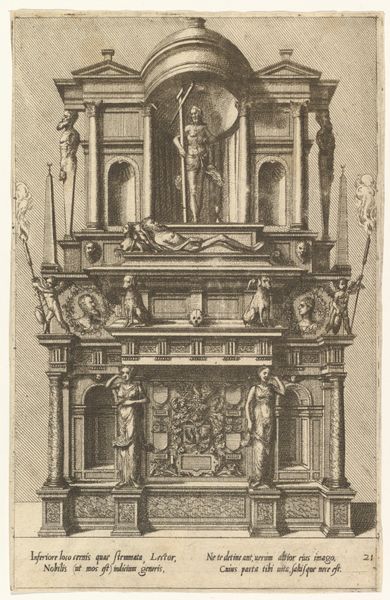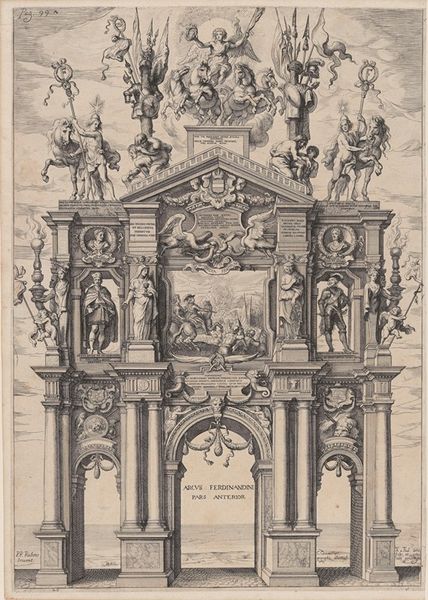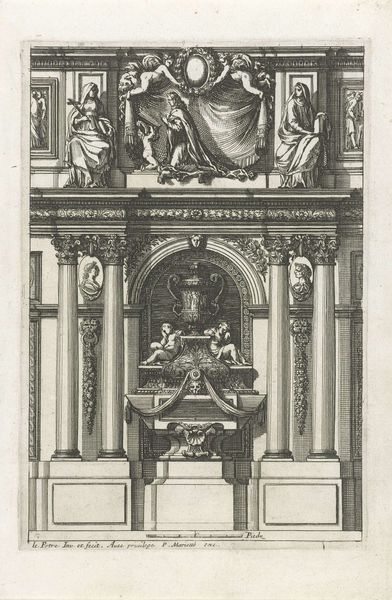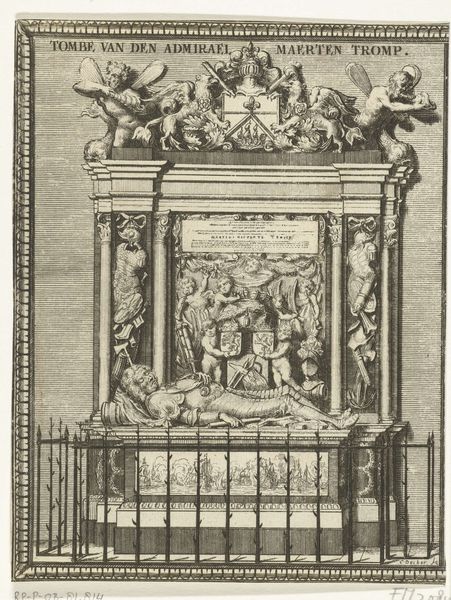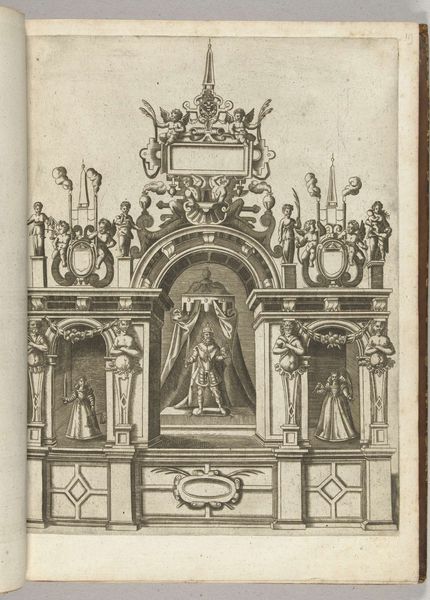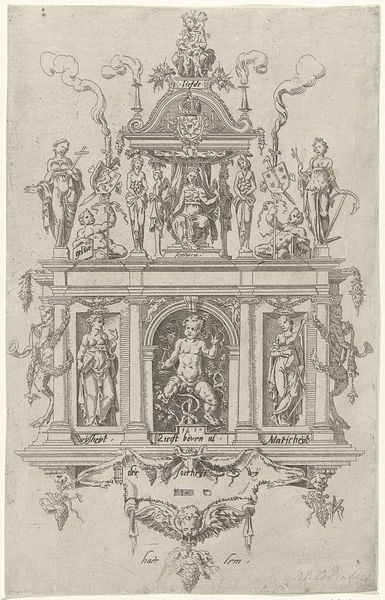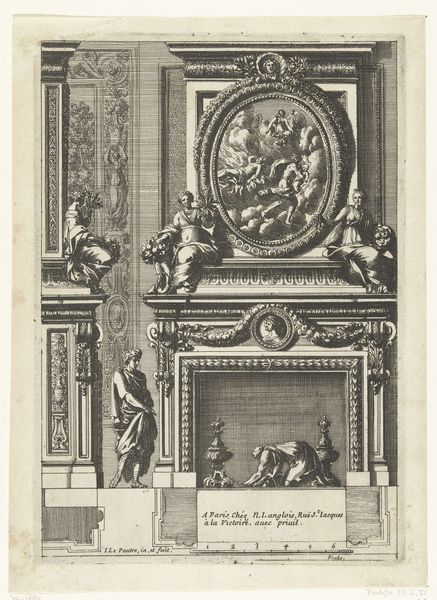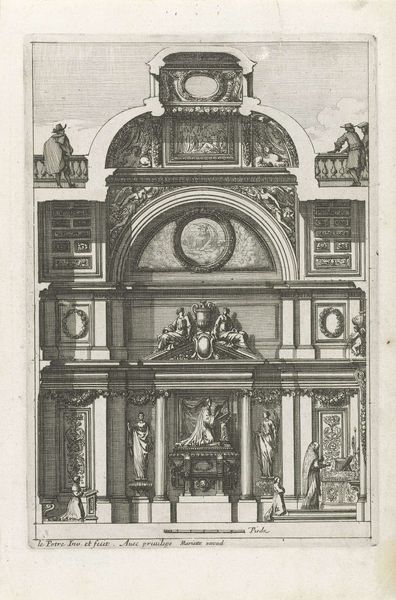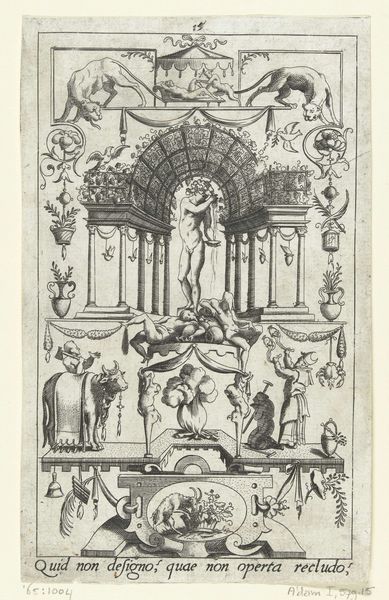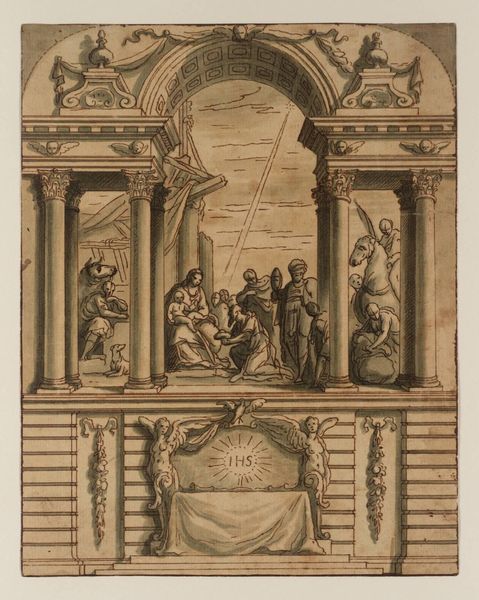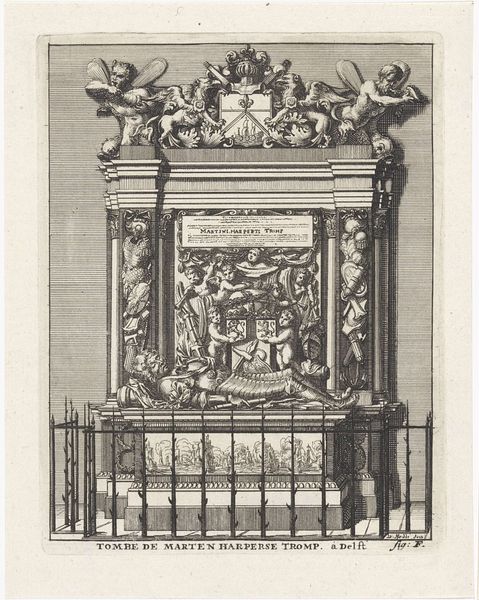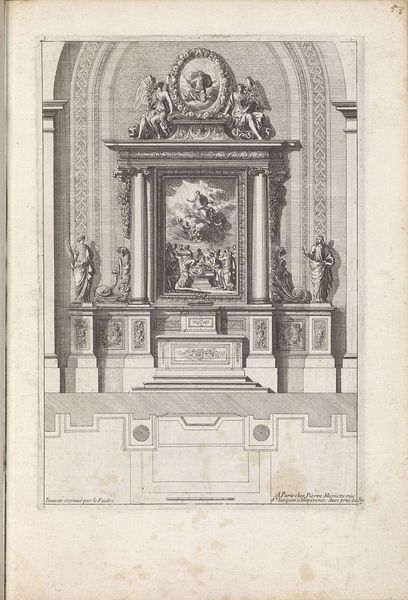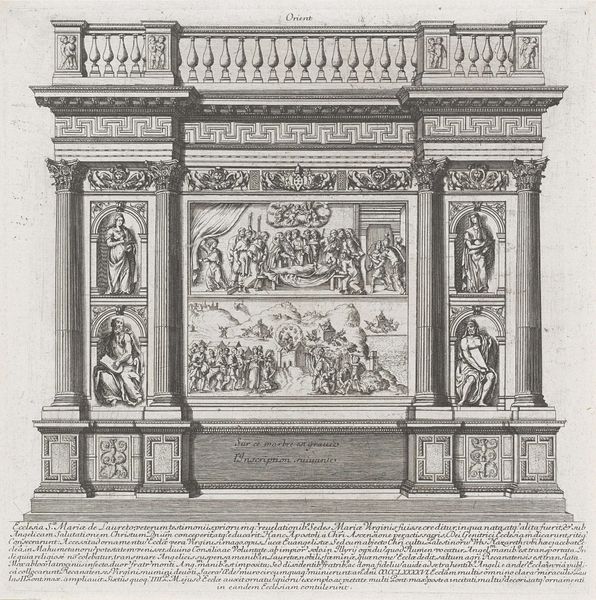
print, engraving, architecture
#
baroque
# print
#
old engraving style
#
history-painting
#
engraving
#
architecture
Dimensions: height 348 mm, width 244 mm
Copyright: Rijks Museum: Open Domain
Editor: This is the "Grafmonument van paus Adrianus VI", or Gravestone of Pope Adrian VI, a print made by Jan Wandelaar in 1727. Looking at the details, I'm struck by how architectural it feels, even though it’s a print. How do we interpret such a grand, seemingly three-dimensional structure depicted through the flat medium of engraving? Curator: That’s an excellent observation. As a materialist, I see this work primarily as an artifact of labor. Consider the engraver's meticulous process. Every line, every shadow, is the product of deliberate, skilled handiwork. The print isn’t just a representation; it's the end product of an industrial craft involving specialized tools and training. Ask yourself: what's the significance of using printmaking—a process enabling reproduction—to immortalize someone meant to stand apart? Editor: That makes me think about how printmaking democratizes art in some ways. Was this image meant to be widely circulated? Curator: Precisely. The material of print makes the gravestone of the Pope reproducible and therefore, consumable by a wider audience. The creation of prints like these speaks volumes about Baroque society's approach to fame, religion, and perhaps, even class. How does this mass production contrast with the uniqueness one expects from high religious figures and commemorative objects like monuments? Editor: It's a clever paradox. This accessible artwork prompts a whole new perspective on what such an engraved work communicated about the relationship between the church, its leaders, and the people. Curator: Indeed. By focusing on the materials, production, and dissemination of this print, we uncover so much more than just aesthetic or religious meaning. Editor: I never considered approaching art through the lens of its material creation, that perspective gave the work an entirely different feel, especially regarding labor and historical context. Curator: Exactly, thinking about material conditions gives voice to previously unheard artistic forces.
Comments
No comments
Be the first to comment and join the conversation on the ultimate creative platform.
